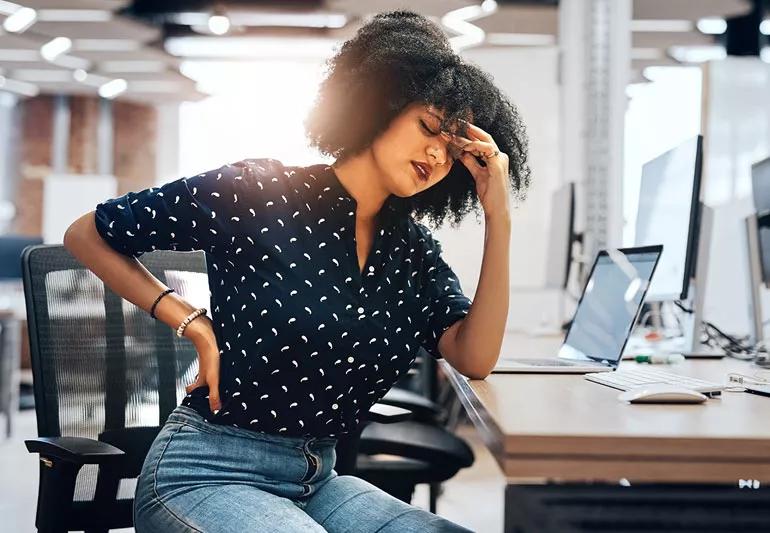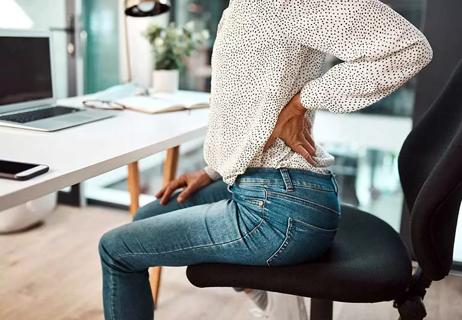Short answer — yes

Back pain is common: 80% of adults will experience it in their lifetime. Usually, people think of all-over back pain, but one-sided back pain is also a thing. And it can be an annoying thing.
Advertisement
Cleveland Clinic is a non-profit academic medical center. Advertising on our site helps support our mission. We do not endorse non-Cleveland Clinic products or services. Policy
“Unless you experienced an obvious cause, like a fall, you probably aren’t dealing with a fracture that requires special care,” says spine specialist Russell DeMicco, DO. “Rarely do you need to worry just because your pain is only on the left side or right side of the back.”
The exceptions are:
Spontaneous one-sided back pain can occur for a variety of reasons, but it’s usually related to the soft-tissue (muscle, ligament, joint). The back muscles run up and down the left side and the right side — they don’t cross the midline (spine). So if you irritate a muscle on the left side of your back, you would likely only have pain in that region.
“Someone who is experiencing tissue-related pain will feel an aching soreness and stiffness,” says Dr. DeMicco. “Often, the area will be tender to the touch and have restricted range of motion because of the discomfort they feel.”
Advertisement
Causes of tissue-related discomfort include:
Usually, muscle-related pain will subside if you use a nonsteroidal anti-inflammatory drug (NSAID), rest the area and use an ice pack.
If the pain you experience is a little deeper in the back, and you’re having other symptoms as well, it could be related to an internal organ. See your doctor, because these are signs of an infection or irritation:
“If you have pain in the left or right side of your back that started for no particular reason, it will most often resolve on its own or with minimal treatment,” says Dr. DeMicco. “Typically, we see 50% of cases resolving within two weeks and 75% resolving by six to eight weeks.”
Have you been dealing with intense pain for 10 days and over-the-counter pain relievers aren’t cutting it? Time to call your doctor, who may recommend:
“If your pain extends beyond six weeks, your doctor will likely recommend imaging,” says Dr. DeMicco. “An X-ray is usually the first step to ensure there isn’t a broken bone or some other obvious reason for the pain.”
Advertisement
Learn more about our editorial process.
Advertisement

Hanging upside down for any length of time may decompress the tension in your spine

When your lower back hurts, stretching and staying active can be key to finding relief

Drinking alcohol can cause nerve pain, dehydration and weight gain, which can all lead to back pain

Your sleep position, immobility, mattress and underlying conditions can all cause morning back pain

Rest may be all you need to get rid of running-related lower back pain

It’s always a good idea to let a healthcare provider know about any back pain you’re experiencing, especially if it results from trauma or persists longer than three months

From physical and biofeedback therapy to nerve ablations and blocks, there are many nonsurgical options for managing back pain

Rest, physical therapy, acupuncture and nerve blocks are just a few ways to find relief

Start having sex about 72 hours before ovulation, then at least every other day during your fertile window

Attachment theory suggests that your earliest relationships shape connections throughout your life

It isn’t a recognized mental health disorder, but research shows that problematic social media use can negatively affect your mental health, self-esteem and sleep